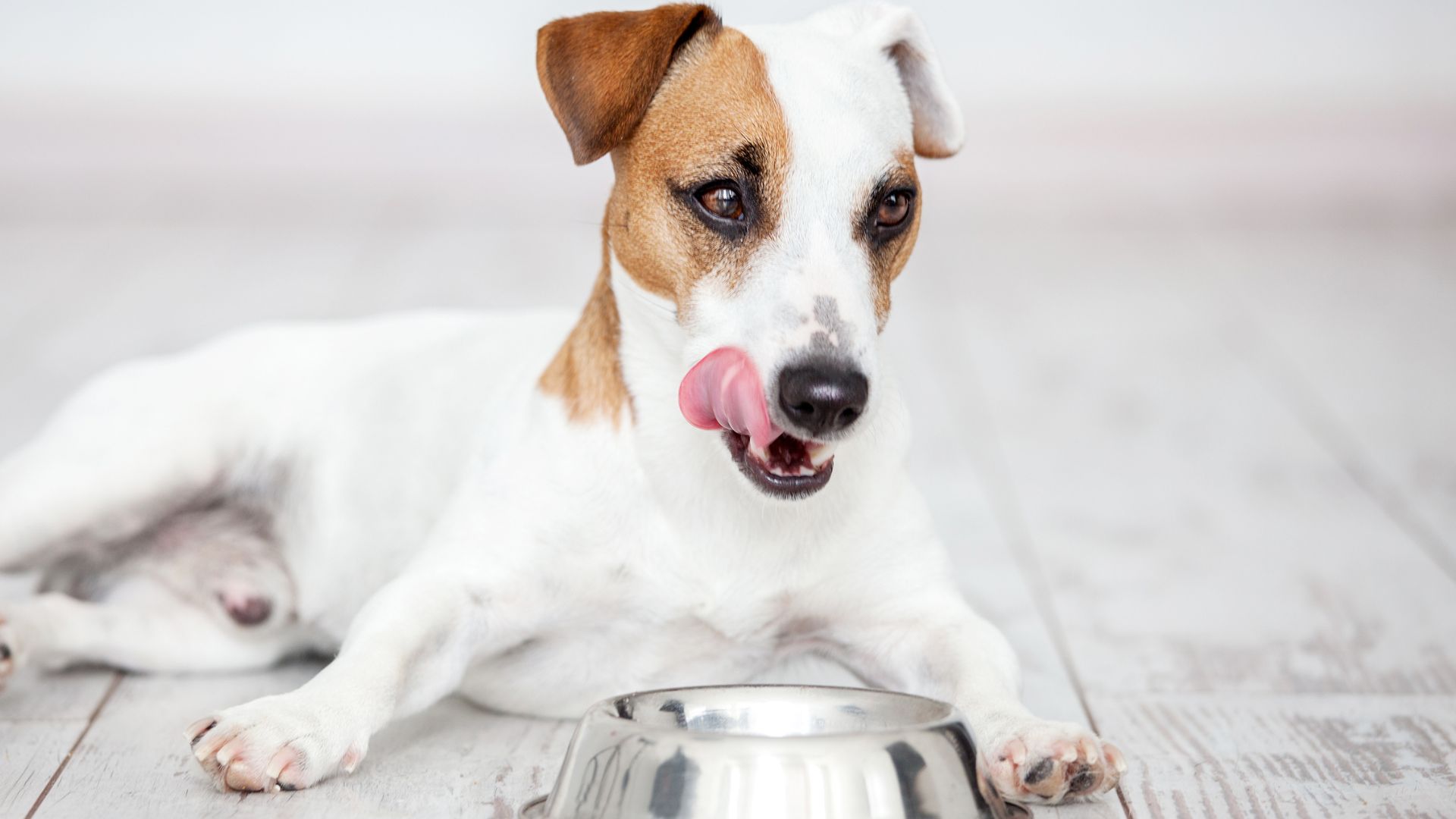
Many dog breeds will reach 50% of their adult size within 5-6 months. Some breeds will be fully grown by 8-12 months, some 12-18 months, and others 18-24 months. With this incredible range, it’s no surprise that puppyhood is in fact a critical period, and one that we need to get right.
Post weaning is the most nutritionally demanding period in a dog’s life and this is even more demanding in large or giant breeds.
It’s not just bones that grow in puppies, but every part of their body. They have muscle growth and they are constantly renewing cells. This includes those found in the gut, those on the skin and of course red blood cells (and white blood cells for that matter – which are crucial to their immune function). Their brains are also forging new connections and strengthening important ones.
For all this growth, regeneration, and for want of a better word, work, they need two things. Puppies need fuel and nutrients.
So let’s take a look at these two things that puppies need in a little more detail.
Fuel is energy and dogs are particularly good at using fat for energy. For this reason, fat is not something to be avoided in your growing puppy.
Fatty acids can be saturated, monounsaturated, or polyunsaturated. The difference is in their structure.
Saturated fatty acids contain no double bonds between the carbon atoms and are therefore saturated with hydrogen.
Monounsaturated fatty acids have one double bond (mono=one).
Polyunsaturated fatty acids have two or more double bonds (poly=many).
The more double bonds a fatty acid has, the less stable the molecule, which means it is more susceptible to oxidation, resulting in rancidity. This is why fish oils should be stored in a dark, glass bottle and why PUFA rich oils shouldn’t be used for frying!
In dogs, the body has a requirement for two distinct EFA families. The Omega-6 and Omega-3 series.
Omega-6 fatty acids include:
But there is often an imbalance. Our modern day dogs and puppies for that matter are seemingly consuming more omega-6 than their ancestors. These guys ate a diet much higher in omega-3.
Docosahexaenoic acid (DHA) is particularly important in brain and eye development. It comprises over 90% of the omega-3 fatty acids in the brain. The brain takes up DHA over any other fatty acid and DHA deficient diets are being linked to neurodegenerative disease in humans more and more.
Interestingly, Beagle puppies fed diets fortified with DHA had statistically better results in various learning tasks than those puppies fed a DHA deficient diet.
But what is also of interest is that aggression in dogs correlates with low omega-3 levels too!
In addition, DHA supports myelin formation – which is the white matter that insulates brain circuits. Myelin sheaths ensure electrical impulses are transmitted quickly and efficiently along nerve cells. This is so important for all dogs, but especially our puppies who are consistently forging new connections in their brain, and wanting them to stick!
Sources of Omega-3 Fatty Acids:
Fatty acids are necessary for healthy skin formation, modulation of the immune response and the transport of fat-soluble vitamins.
The skin is the largest organ of your dog’s body and it has 3 layers.
The skin functions as a barrier, both ways and it actually forms part of the immune system.
In a series of studies in the early 1900s, rats were fed a diet completely devoid of fat. These rats developed visible skin abnormalities, increased water loss across the skin and other body-wide issues. However, when PUFAs were introduced into the diet, these defects were reversed.
The skin, especially the epidermis, is organised into layers with a distinctive lipid composition. Linoleic acid (LA) is the most abundant PUFA present in the epidermis and as we know, LA is an Omega-6 fatty acid – the point is not to avoid Omega-6 but ensure there is a balance between the two families.
Sources of Omega 6 Fatty Acids:
Hemp seeds and hemp seed oil contain what is described as an optimal omega 3:6 ratio.
Fatty acids are known to play diverse roles in immune cells.
They are important as a source of energy, as structural components of cell membranes, as signalling molecules and as precursors for the synthesis of eicosanoids and similar mediators (involved in the inflammatory response).
Recent research has suggested that the localisation and organisation of fatty acids into distinct cellular pools has a direct influence on the behaviour of a number of proteins involved in immune cell activation, including those associated with T cell responses and antigen presentation.
Do We Need To Boost Our Pet’s Immune System?
Vitamins are needed in minute quantities to function as essential enzymes, enzyme precursors or coenzymes in many of the body’s metabolic processes.
Fat soluble vitamins can be stored in the body’s lipid deposits, making them more resistant to deficiency but also more likely to result in toxicity.
The fat-soluble vitamins include A, D, E and K and for them to do their job, they heavily depend on sufficient fatty acids in the body.
The well-known function of vitamin A is its role in vision. Vitamin A is a precursor of rhodopsin, the photopigment found in rods within the retina of the eye that helps us and our pets to see at night. One manifestation of vitamin A deficiency is slow, dark adaptation progressing to night blindness. Vitamin A is also part of the bone formation and bone resorption equation. It influences both osteoblast and osteoclast function which as we know is so important in the growing puppy.
Sources of Vitamin A: eggs, oily fish, carrots, broccoli, cantaloupe.
Vitamin D is actually a hormone that promotes calcium absorption. It also plays a role in immune function and cell growth and development. Which, as you can gather, are super important for the developing puppy.
Despite us humans calling it the sunshine vitamin, dogs are dependent on dietary sources of Vitamin D.
Sources of Vitamin D include: salmon, eggs and liver.
Vitamin E includes several compounds, of which the most biologically active and widely distributed is alpha tocopherol.
Vitamin E functions as an important antioxidant within cells, protecting lipids, particularly the polyunsaturated fatty acids in cell membranes, against oxidative damage caused by free radicals and active forms of oxygen that may be generated during metabolic processes.
Vitamin E is synthesised only by plants, the richest sources being vegetable oils and to a lesser extent seeds and cereal grains. Tocopherol concentrations are highest in green leaves. Animal tissues tend to be low in vitamin E with the highest levels being found in fatty tissues.
Sources of Vitamin E include sunflower seeds, spinach, pumpkin and red bell pepper.
Vitamin K comprises a group of compounds called the quinones. Vitamin K1 occurs naturally in green leafy plants and vitamin K2 is synthesised by bacteria in the large intestine.
Vitamin K is required for normal blood clotting and is also involved in the regulation of calcium phosphates in growing bone.
Sources of Vitamin K include spinach, green cabbage, beef liver.
The final nutrient we are going to take a look at in this blog is protein.
Proteins are large, complex molecules composed of hundreds to thousands of amino acids.
They are ultimately the building blocks of the body. Protein is required in the diet to provide a source of amino acids to build, repair and replace body proteins.
Dietary amino acids are absorbed in the gut and then transported to the liver. The liver changes amino acids so they can be used by the rest of the body.
Proteins in the body have numerous functions.
1. Components of hair, skin, nails, tendons, ligaments, and cartilage,
2. Hormones are composed of protein molecules – these include insulin and glucagon which are key to maintaining blood sugar levels
3. Proteins are found in the blood –haemoglobin carries oxygen between the lungs and cells, lipoproteins carry fats throughout the body and transferrin carries iron through the blood.
All proteins are in a constant state of renewal and degradation. During growth (or reproduction) additional protein is needed for the creation of new tissue.
This is why puppies have a higher protein requirement than a fully matured dog.
Sources of Protein:
Meat – lamb, chicken, beef, duck, pork, veal, venison
Eggs
Fish and seafood– sprats, sardines, salmon, mackerel, mussels
Dairy – kefir
There are many more nutrients that puppies need to grow and develop to their full potential, so if you’d like to learn more, please check out the following blogs:
Why Does My Dog Need Minerals – Part One
If you would like any support with your growing puppy, then please check out our services to see how we can help. Check out our Ultimate Puppy Guide, available in our shop!
Thanks for reading,
MPN Team




